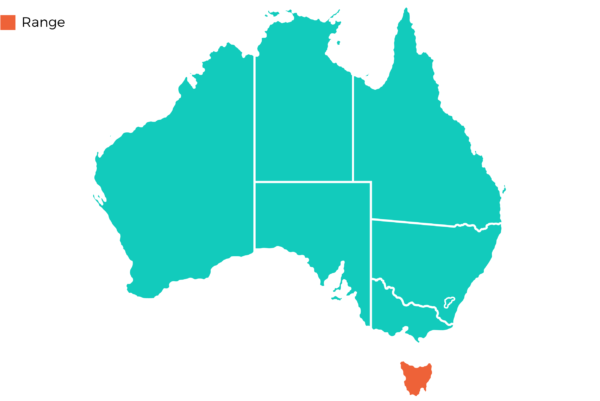Description
Tasmanian Devils are the largest living carnivorous marsupial in Australia. They have sharp powerful claws and a backward facing pouch. They have black fur with white patches on the throat and rump. They are generally solitary creatures but sometimes come together to feed on a carcass. The devils gained their name from European explorers who heard their loud screeching noise, and saw their ferocious behaviour when eating or mating. According to researchers, the Tasmanian Devil’s large head and neck allow it to generate one of the strongest bites per unit body mass of any land predator - 540 kg per square inch.
Distribution
Tasmanian Devils were common on mainland Australia. Today, they are only found throughout Tasmania.

Lifespan
4 - 6 years.
The Tasmanian Devil is listed as Endangered on the IUCN list.
Size
The size of the Tasmanian Devil can reach 76 centimetres in length and weigh on average 12 kilograms.
Diet
Tasmanian Devils are mainly scavengers feeding upon the carcasses of dead animals but can also be effective predators. Food includes wallabies, small mammals, birds, reptiles, amphibians and insects.
Habitat
Coastal moorlands, woodland forests, wooded rural areas, scrublands and rainforests.
Breeding
Both male and female Tasmanian Devil begins breeding at 2 years of age. The female will give birth to 25 - 40 joeys however only 4 will survive. They bear two young in the first season and then 3 - 4 annually for approximately the next three years. Tasmanian Devils mate in March and the young are born a month later. They remain in the mother's backward-facing pouch for 15 weeks and then are left in a den. By October the joeys are weaned and have begun following their mother, sometimes catching a lift on her back and stomach.
Threats
Devil Facial Tumour Disease
塔斯马尼亚小恶魔/袋獾 | タスマニアンデビル | 태즈메이니아데빌